Alaskan Malamutes are an excellent breed for active, high-energy people. They come from a long line of sled dogs. Therefore, they were bred to work hard. These days, they make wonderful companions for any family. These dogs thrive in cold climates and love being outdoors. We will look at Malamute progression from when they are born to when they are fully grown.
Breed Summary
The Malamute is a strong, loyal, affectionate, playful, and dignified dog breed. They are known for their bushy tails and fluffy bodies. Furthermore, they originate from arctic sled dogs, as they have deep, powerful chests, shoulders, and a dense, weatherproof coat. Malamutes have affectionate almond-shaped brown eyes and love snuggling up with their humans after a hard day’s work or play session. Lastly, they are fantastic with children and a joy to have around.
Malamute Growth and Weight Chart by Age
On average, a female Malamute weighs around 75 pounds when fully grown. On the other hand, a male Malamute can weigh up to 85 pounds. Therefore, females are slightly smaller than males. The table below outlines what weight to expect at what age. However, these figures could vary from dog to dog.
| Age | Weight in Pounds | Weight in Kg |
|---|---|---|
| Newborn | 1 – 1.5 lbs | 0.45 – 0.68 kg |
| 1 Month | 10 – 15 lbs | 4.5 –6.8 kg |
| 2 Months | 20 – 30 lbs | 9 – 13.6 kg |
| 3 Months | 28.8 – 33.3 lbs | 13.1 – 15.1 kg |
| 4 Months | 37 – 43.4lbs | 16.8 – 19.7 kg |
| 5 Months | 46.2 – 53.1 lbs | 21 – 24.1 kg |
| 6 Months | 53.9 – 62.2 lbs | 24.4 – 28.2 kg |
| 7 Months | 60 – 68.5 lbs | 27.2 – 31.1 kg |
| 8 Months | 65.1 – 75. 6 lbs | 29.5 – 34.3 kg |
| 9 Months | 68.3 – 79.8 lbs | 31 – 36.2 kg |
| 10 Months | 71.4 – 83.7 lbs | 32.4 – 38 kg |
| 11 Months | 73.2 – 87 lbs | 33.2 – 39.5 kg |
| 12 Months | 75.4 – 89 lbs | 34.2 – 40.4 kg |
When Will My Malamute Stop Growing?
Alaskan Malamutes will be close to their full weight and height around their first birthday. They generally stop growing between 18 and 24 months old. However, after that, they will continue to put on muscle and fill out their chest, and this will continue until they are about two years old. When they are puppies, they should receive smaller meals every 4 to 5 hours. However, when fully grown, you can feed them twice a day, leaving a gap between 7 to 8 hours between meal times. Also, owners are advised to take their dogs to the vet regularly to ensure they progress well, at least twice a year. Then, once they are older, yearly visits to the vet should suffice. Even if your dog looks healthy, an annual check-up is essential to ensure nothing is wrong with your Malamute.
How Big Will My Malamute Be When It’s Fully Grown?
Malamute progression is different for every dog. However, when fully grown, most of them generally measure about 23 to 25 inches in height, but males are normally taller than females. Also, as large dogs, they can weigh between 75 and 85 pounds. However, some Malamutes tip the scale at over 100 pounds. Furthermore, these dogs are usually about 29.5 to 34.5 inches in length. There are three ways to predict how big a Malamute will be: age, genetics, and paw size.
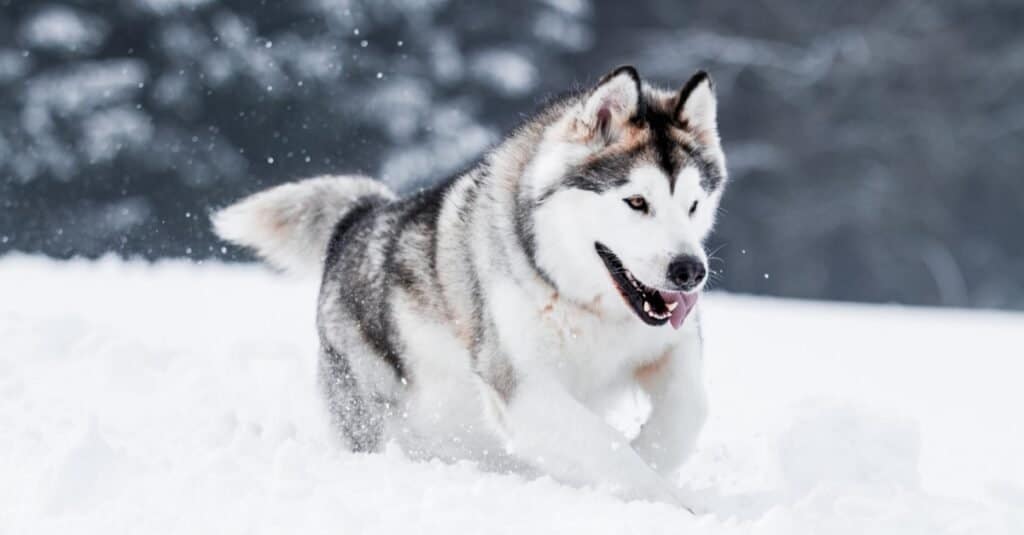
Malamute progression is different for every dog. However, when fully grown, most of them generally measure about 23 to 25 inches in height, but males are normally taller than females.
©Aneta Jungerova/Shutterstock.com
The Biggest Malamute Ever Recorded
The giant Alaskan Malamute is a bigger version of the Alaskan Malamute, and they are gentle giants in the dog world. These enormous dogs can weigh up to 190 pounds. The record for the biggest dog in Richmond was won in 2018 by a giant Alaskan Malamute named Tyson. At that stage, he was just three years old, and he weighed 150 pounds and stood 59 inches high. When Tyson’s owner got him, he weighed just 28 pounds. This humongous dog eats three pounds of raw meat every day. Additionally, he receives dog food and treats daily. When Tyson is out on one of his many walks, people all over stop and want to take pictures with him.
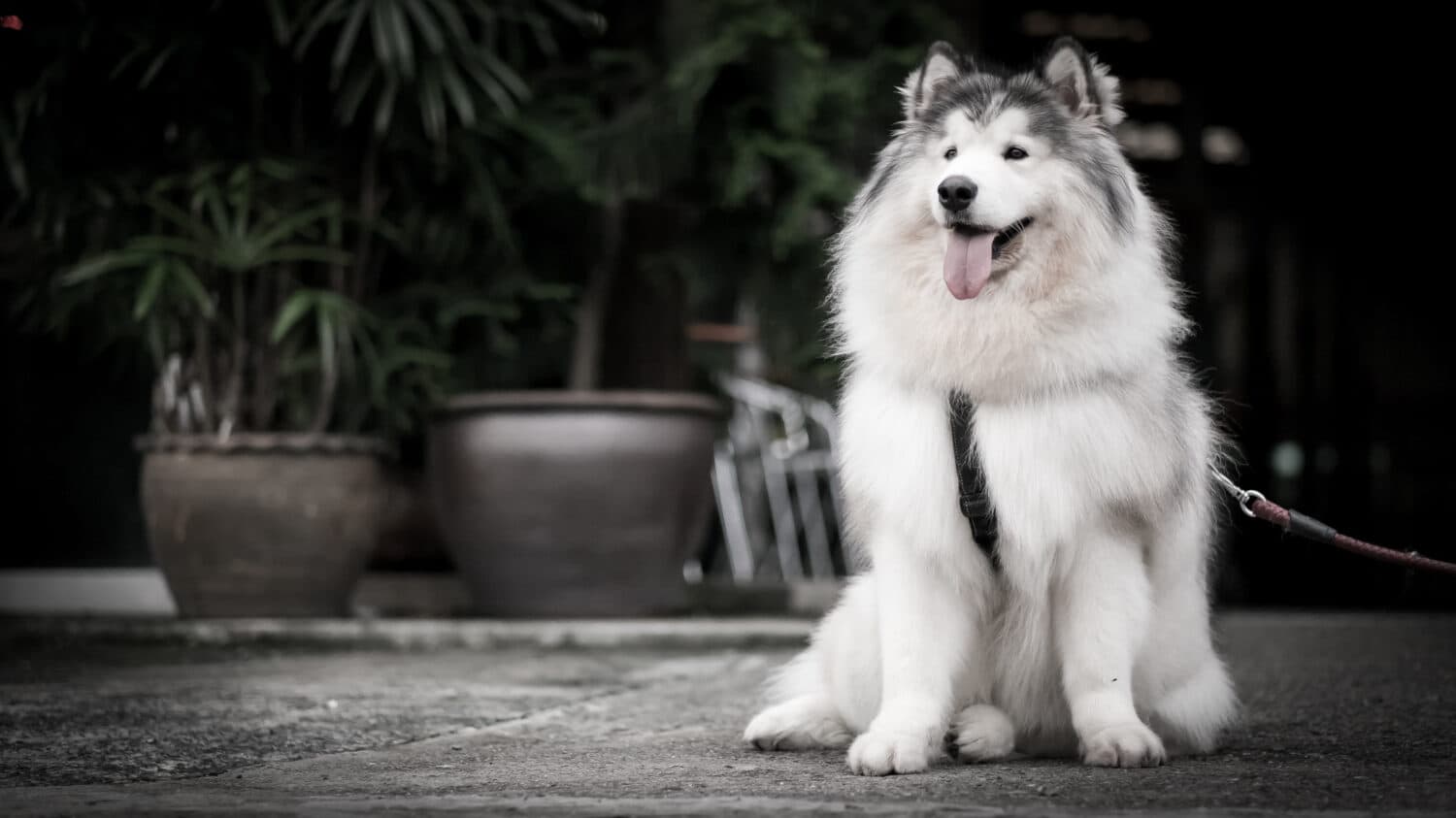
The giant Alaskan Malamute is a bigger version of the Alaskan Malamute, and they are gentle giants in the dog world. These enormous dogs can weigh up to 190 pounds.
Image: Tatar CCube, Shutterstock
©Tatar CCube/Shutterstock.com
When Should My Malamute Be Spayed or Neutered?
Spaying or neutering your Malamute is a good thing for many reasons. Firstly, you will not have to worry about puppies if you are not planning on breeding, which will most likely improve their quality of life. Furthermore, spaying and neutering is a proven way to reduce several risks, including testicular cancer, uterine infections, and breast cancer. When it comes to males, neutering prevents territorial and aggressive behavior, and it will stop your male Malamute from looking for a mate every time you go for a walk.
Different vets will recommend different ages depending on the individual dog. However, neutering a male malamute between 4 and 9 months before he reaches puberty is advised. The thought is that it will have long-term benefits and stop unwanted behavior such as aggression and marking. Females are a bit different, as there is no timeframe advised, but the sooner, the better, and definitely before their first heat cycle.
When Should My Malamute Be House Broken?
Malamutes’ progression starts early, and you can begin training your pup as soon as you get them home. However, when they are 8 to 12 weeks, they will start to realize where they should go potty. As an owner, there are a few signs to look out for that your puppy is ready to be housebroken. These include starting to squat, lifting a leg, pawing at the door, and sniffing the floor. Some tips to help with potty training involve using a crate to put your puppy in when you are not there to take it out.
Also, use a leash to take your puppy outside to where you would like them to go potty. Then, use treats to reward your puppy when they “go” outside. Lastly, keep cleaning supplies close in case of accidents until you have confidence that your puppy is fully housebroken. Patience is vital when house training any dog. Your dog will long to please you and will eventually learn.
When Should My Malamute Stop Eating Puppy Food?
All puppies, including Malamutes, need good-quality, high-protein food. They should be on this food from birth until they are about 18 months old. After 18 months, their dietary needs will change as they will not need as much protein. It is a good idea to speak to your vet about changing from puppy food to adult food, as doing this too early or too late may be detrimental to your dog’s health.
When Will My Malamute Start Losing Teeth?
Malamutes will lose their puppy teeth at about four months. However, sometimes, these baby teeth do not fall out naturally, and this could cause problems. Unfortunately, this is a common issue in dogs like Malamutes. If it occurs, your dog should be taken to the vet to extract the teeth before it causes painful gums, adult tooth loss, or bad breath.
In puppies, the teething process will continue for a few months and cause “naughty” behavior such as chewing things and destruction. This is because it is uncomfortable or painful for the puppy. To reduce pain and discomfort, owners can try different toys for chewing with different textures to relieve the pain.
When Should I Start Training My Malamute?
Malamutes are strong-willed and intelligent. Therefore, the earlier they are trained, the better to prevent issues in the future. They were bred from hard-working sled dogs, and if taught correctly, their natural instincts can be harnessed in a positive direction. Malamutes can be trained as early as 7 to 8 weeks old. Socialization is crucial for all dogs, and Malamutes should be introduced to different people, animals, and environments from a young age. Also, starting with basic commands such as “sit” and “stay” will lay a good foundation for future training.
What Cues Should I Teach My Malamute First?
Regarding Malamute progression, training cues will help establish the owner as the pack leader. The first recommended cue to teach a Malamute is the “sit” command. Start with the dog in front of you and have a treat in your hand. Then, slowly move the treat from the dog’s nose over and down the back of its head. This will cause the dog to lean back and sit. As they do this, you should say the sit command. Then, offer them the treat. Repetition is key. Eventually, the dog will follow the command without the treat. After the sit command has been executed successfully, you can start with “down” and then, eventually, “heel” or “roll.”
When Will My Malamute Calm Down?
Each dog is different. However, Malamutes generally reach maturity between 3 and 5 years, which is when they will start calming down. At this stage, they will begin to be more relaxed and have less energy. Owners can also help with their dog’s energy levels. One way of doing this is with consistent training, setting clear boundaries, and positive reinforcement. These things all go a long way to showing your dog how to behave and what is acceptable. Another tip is providing physical and mental stimulation, such as taking them for walks and engaging in playtime. Lastly, owners can provide their Malamute with a calming environment, such as a place with a comfortable bed, calming music, and dim lighting.
Common Health Issues Your Malamute Might Experience
Malamutes are generally healthy dogs if they are looked after correctly. However, there are a few health problems that can affect these lovely dogs, including:
- Hip Dysplasia is a common issue that affects multiple dog breeds. The hip joint of the dog does not fit snuggly into the socket. This can result in pain and even lameness. However, it is treatable with medication, physical therapy, or surgery.
- Dwarfism is caused by a deficiency in the pituitary gland of the growth hormone. This can cause stunted growth. Additionally, it can cause swollen joints, lack of teeth, bulging eyes, and infertility. Unfortunately, this disorder is difficult to treat.
- Hypothyroidism comes from underproduction of the gland that regulates a dog’s metabolism, the thyroid gland. Symptoms may include changes in appetite, lethargy, shortness of breath, and hair loss. Luckily, this issue can be treated with medication, and if treated properly, dogs can live relatively everyday lives.
- Cataracts are usually inherited. This condition is when the lens of a dog’s eye becomes clouded and impedes their vision. If untreated, it can lead to blindness. However, dogs can live with this disorder either by adapting to being blind or, in some cases, cataracts can be removed surgically.
- Degenerative polyneuropathy is the degeneration of white matter in the spinal cord. This condition may result in paralysis in some parts of the body. It is believed to be genetic. Symptoms can include difficulty getting up, lack of coordination, or stumbling. There is no treatment for this condition. However, physical therapy may help manage the symptoms and preserve muscle mass.
Pictures of Malamute as Puppies
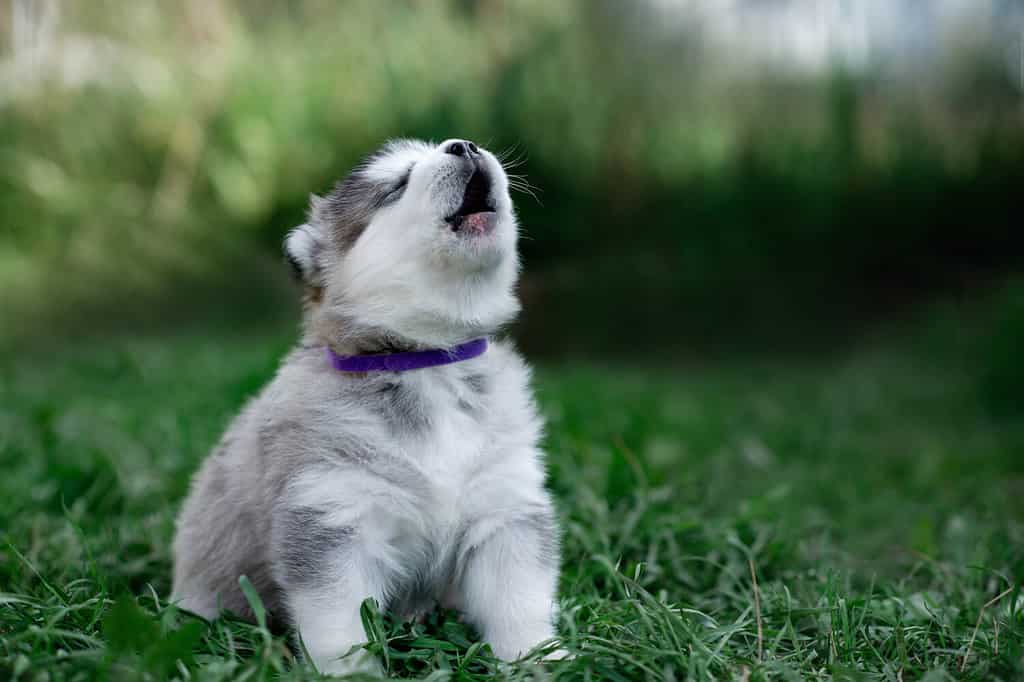
Malamutes will lose their puppy teeth at about four months. However, sometimes, these baby teeth do not fall out naturally, and this could cause problems.
©Kseniia Grigoreva/Shutterstock.com
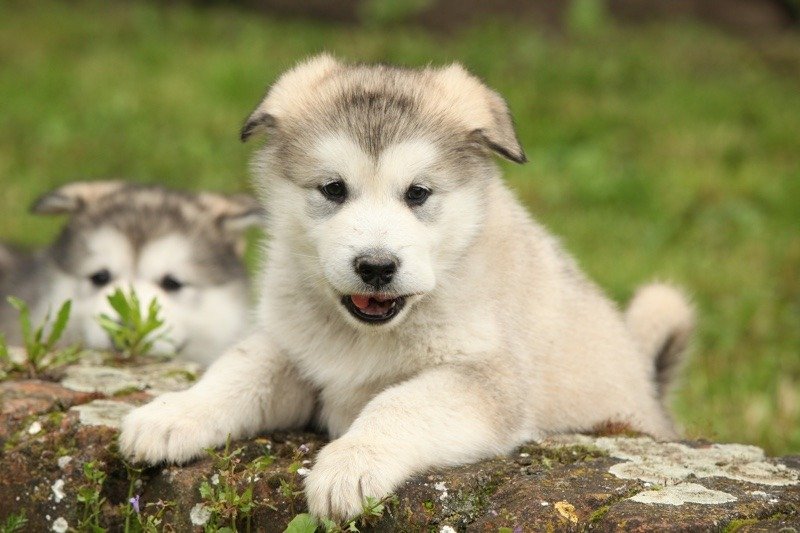
©Zuzule/Shutterstock.com
Malamutes are strong-willed and intelligent. Therefore, the earlier they are trained, the better to prevent issues in the future.
Pictures of Malamute at 6 Months
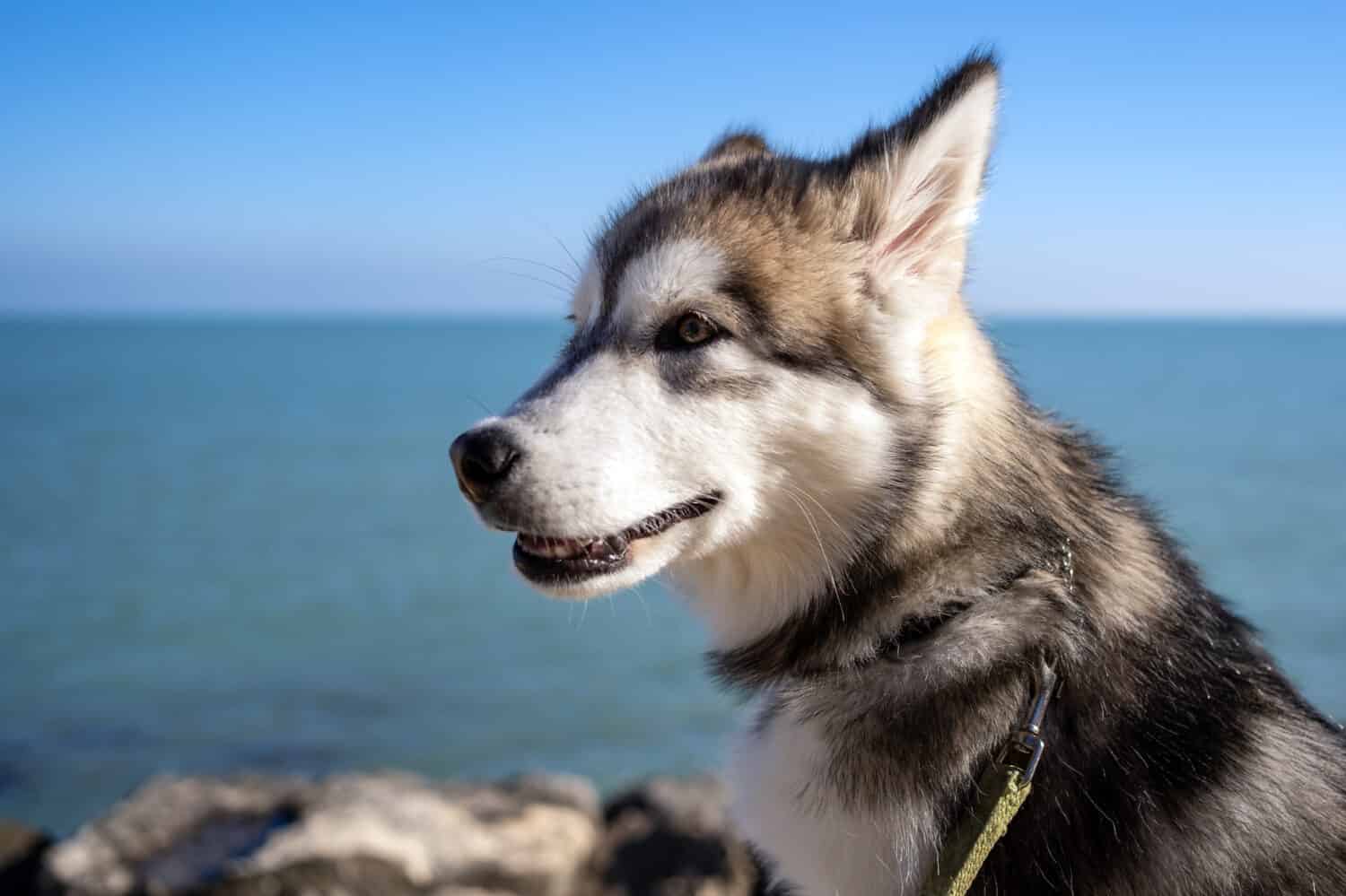
Malamutes can be trained as early as 7 to 8 weeks old. Socialization is crucial for all dogs, and Malamutes should be introduced to different people, animals, and environments from a young age.
Image: pio3, Shutterstock
©pio3/Shutterstock.com

Different vets will recommend different ages depending on the individual dog. However, neutering a male malamute between 4 and 9 months before he reaches puberty is advised.
Image: Anna Krivitskaya, Shutterstock
©Anna Krivitskaya/Shutterstock.com
Pictures of Fully Grown Malamute

Malamutes generally reach maturity between 3 and 5 years, which is when they will start calming down.
©iStock.com/Liliya Kulianionak
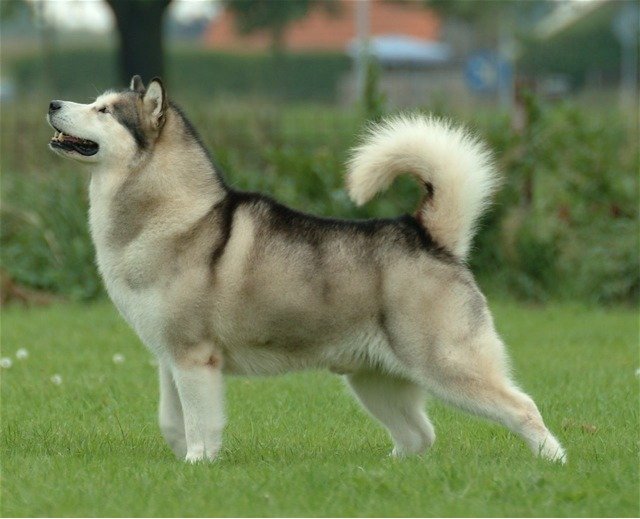
Alaskan Malamutes will be close to their full weight and height around their first birthday. They generally stop growing between 18 and 24 months old.
©SCMW, CC BY 3.0, via Wikimedia Commons – Original / License
The photo featured at the top of this post is © Aneta Jungerova/Shutterstock.com
Ready to discover the top 10 cutest dog breeds in the entire world?
How about the fastest dogs, the largest dogs and those that are -- quite frankly -- just the kindest dogs on the planet? Each day, AZ Animals sends out lists just like this to our thousands of email subscribers. And the best part? It's FREE. Join today by entering your email below.
Thank you for reading! Have some feedback for us? Contact the AZ Animals editorial team.







